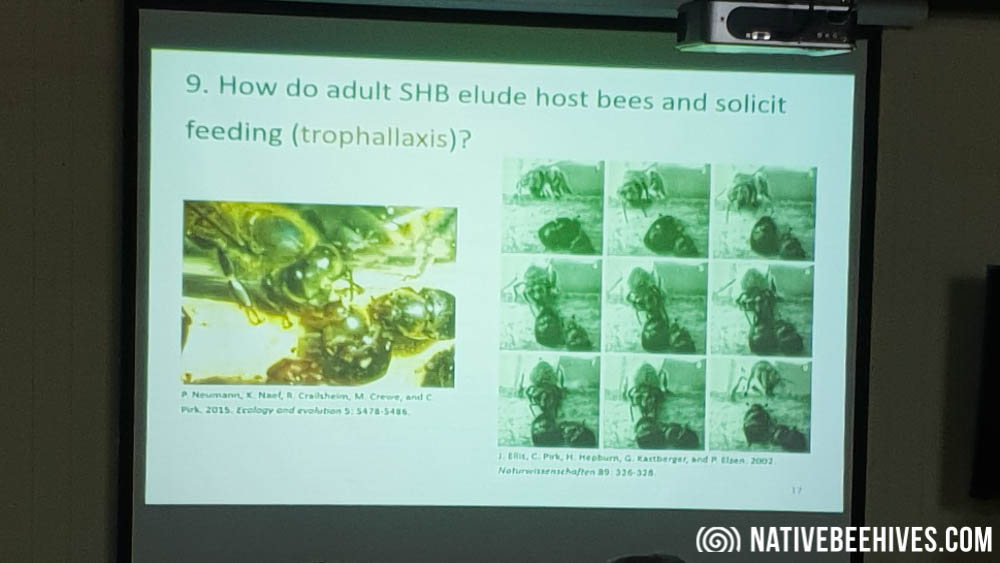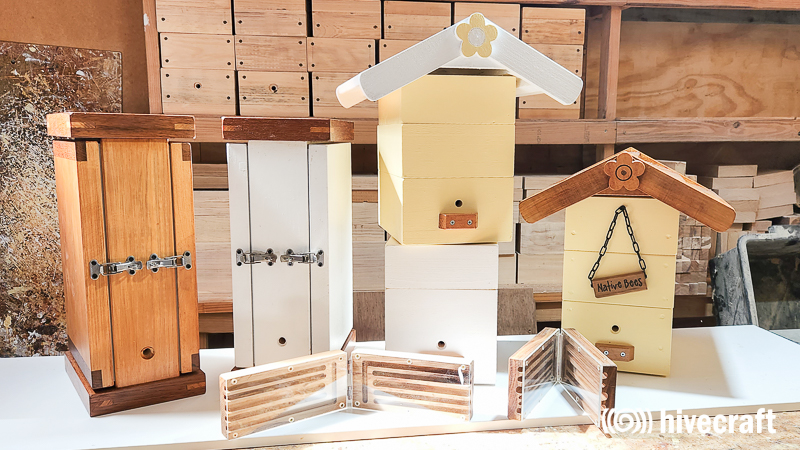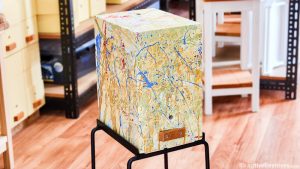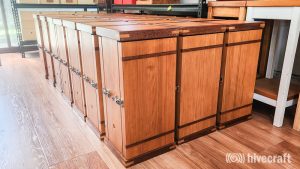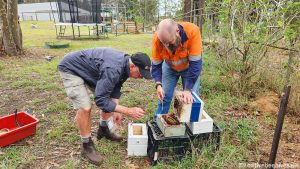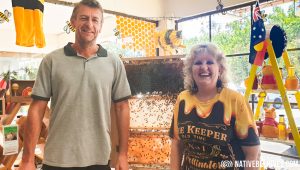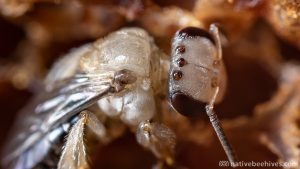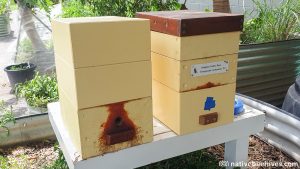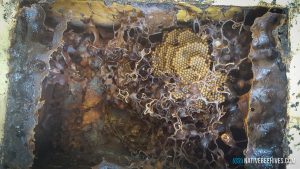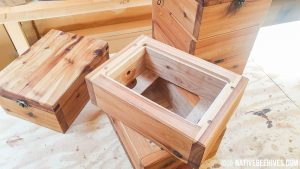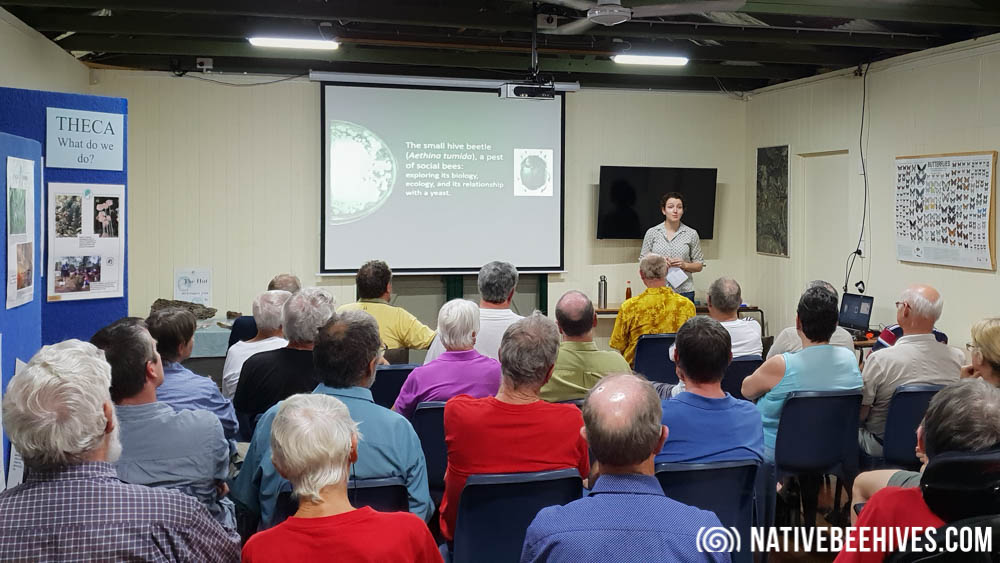
Brogan Amos was the guest speaker at the clubs November meeting. Brogan has done a lot of research in to Small Hive Beetle which is a pest that mainly affects European Honey Bee hives.
The Australian Honey Bee industry is worth 1.1 billion dollars and Small Hive Beetle costs the industry 3.8 million dollars in Queensland alone. SHB is mainly spread when a honey bee hive is moved to a new location. Honey Bee owners will move their hives around to find better resources for the bees or to help with crop pollination.
Small Hive Beetle isn’t a major issue for our Native Stingless Bees in Australia and it’s thought maybe to only be a risk to our hives during splitting.
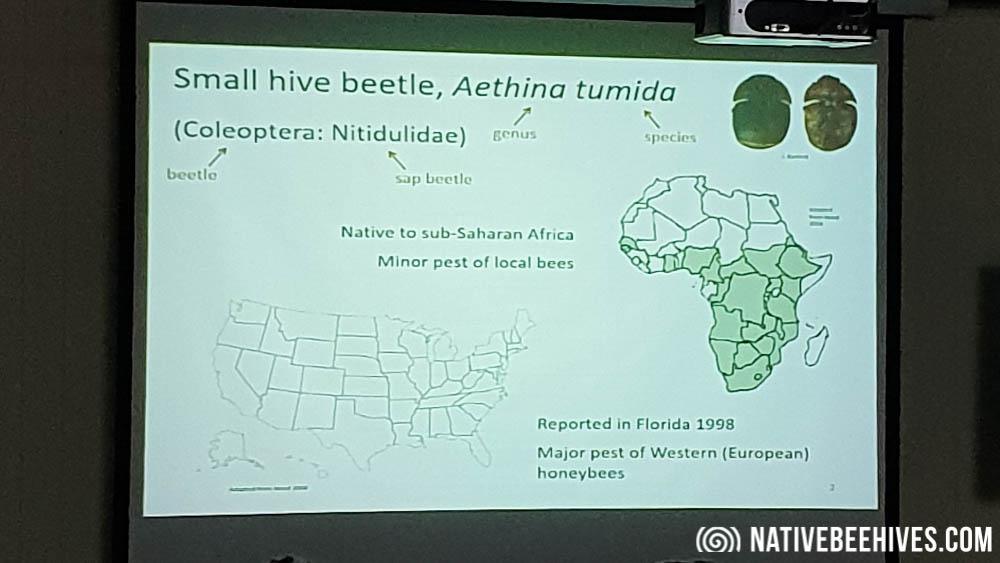
The beetle larvae are to blame for the destruction of the hive as they will “slime out” a hive destroying it. There seems to be a strong relationship between the larvae and yeast, as yeast was always present on the larvae. Things like nitrogen which can come from the beetle wee can also feed the yeast and fermentation process. A hive “slime out” is a result of fermentation, which also creates a very bad smell and the beetle is attracted to the fermentation smell and that can also create health problems in humans if breathed in and with an existing poor health condition.
It was noted that the beetles could manipulate the bees in to feeding them. It’s thought that the beetles take on the smell of the hive so the bees would provide food for the beetles. (Trophallaxis)
Brogan bred beetles in the lab and compared amounts of compounds between the lab beetles and beetles from a hive and found many differences. Honey Bee hives from different locations will have a different smell, so the beetles will take on the smell from that particular hive.
SHB prefer moist soil to travel in and so would be less of a problem inland where soil would be drier.
Brogan hasn’t done research on Native Stingless Bee Hives but it was discussed at the meeting by members that our Stingless Bees are probably only vulnerable during the splitting process, or possibly if they detect the an existing fermenting smell of a slime out created by the Syrphid Fly. When a native bee colony is strong they should be able to defend themselves against the beetles entering the hive.
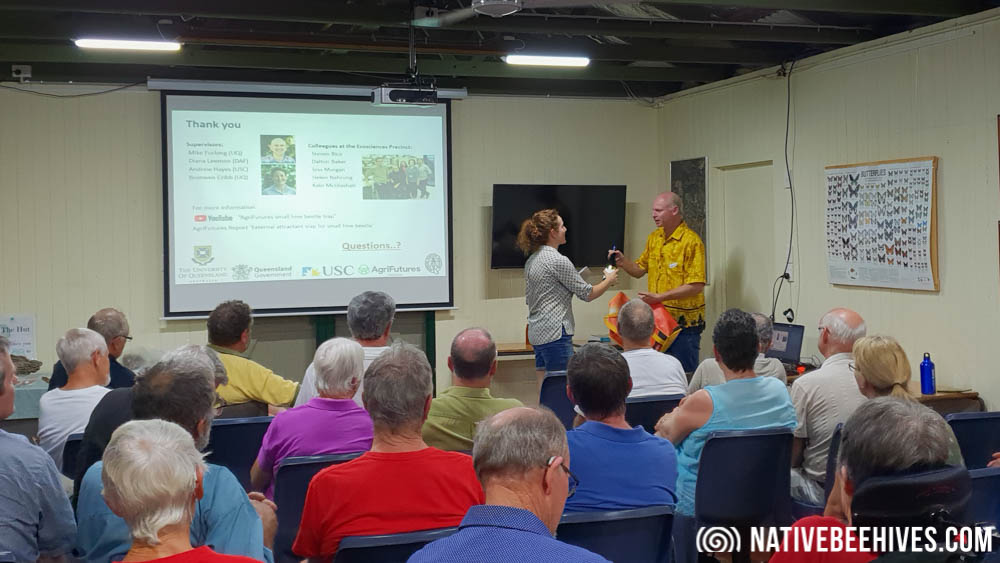
After Brogans presentation there was a bit of discussion around the subject by members and Dean presented Brogan with a bottle of wine on behalf of the club in appreciation for the presentation
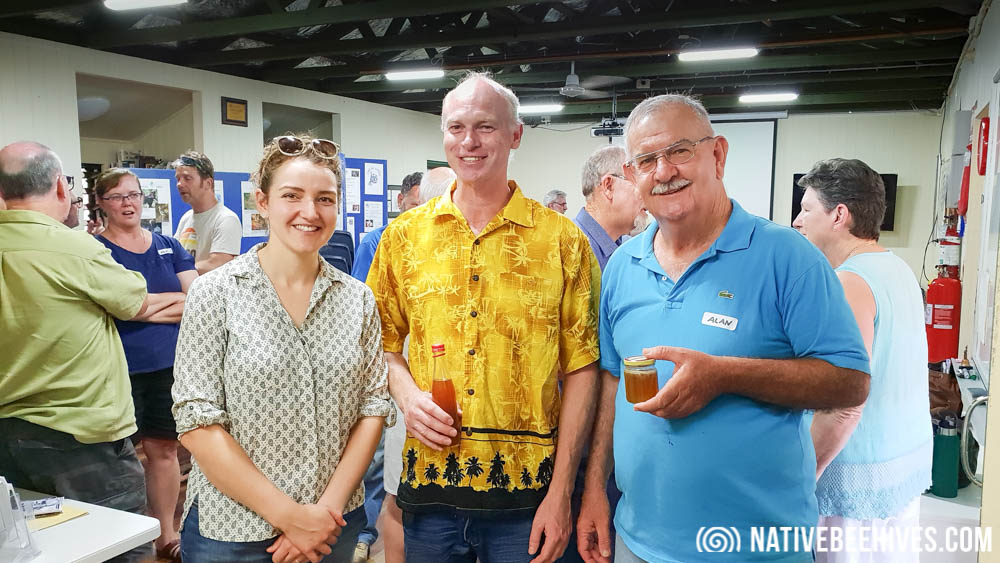
Above Brogan, Dean and Alan
Dean brought a bottle of his fermented stingless bee honey for taste testing. Dean had the honey on a bench for months and periodically released any gases from the sealed container.
Alan is trialing a new vertical rack type system for honey harvesting and also brought a sample in for everyone to try.
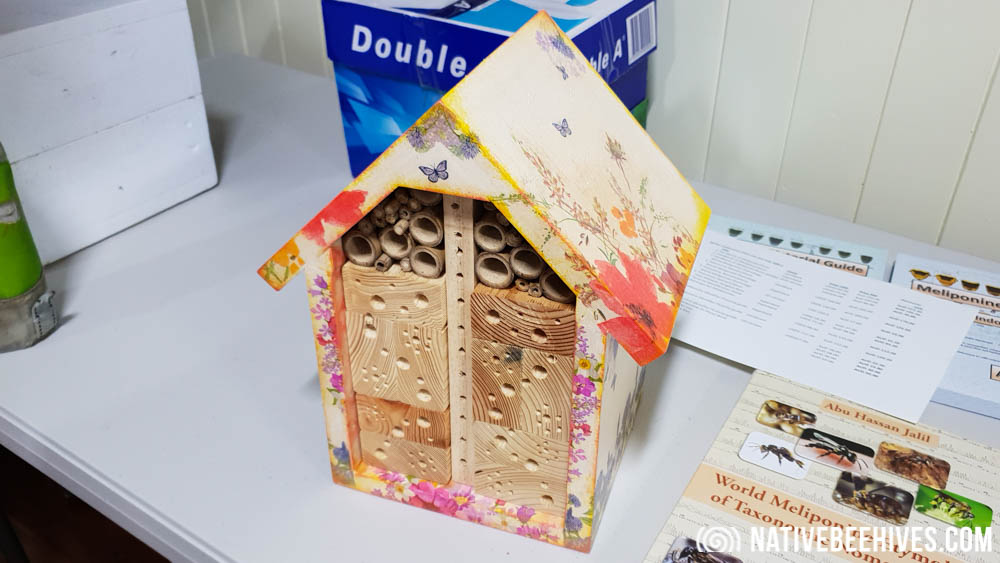
David from Northside Native Bees had one of his decorated bee hotels on display. These are for sale on Davids website
http://www.northsidenativebees.com.au
Sampling stingless bee honey….
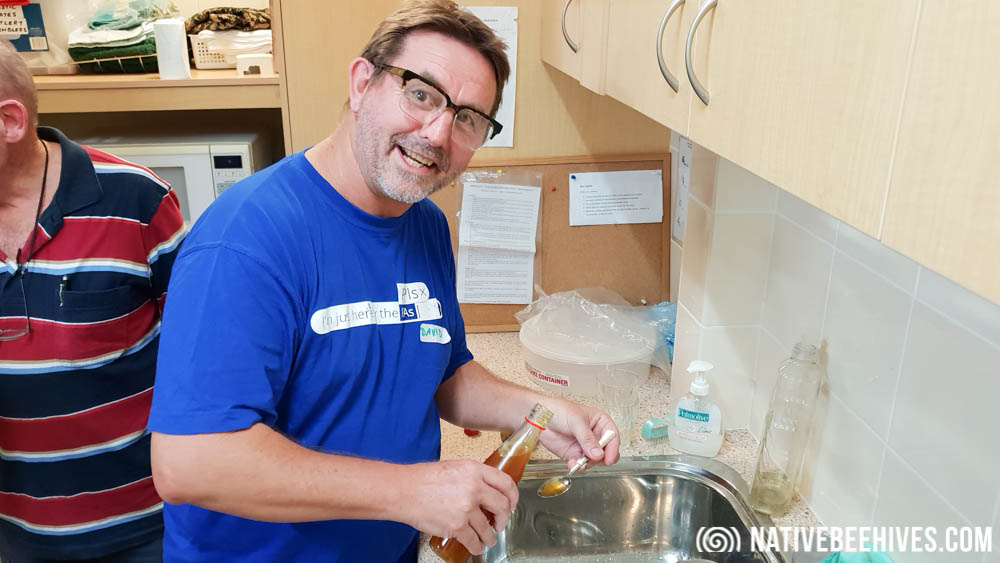
Club details:
website: https://australiannativebee.org.au
The BNBeeC meets on the first Sunday month at the THEACA Hut, 47 Fleming Rd Chapel Hill from 1pm to 3pm.


